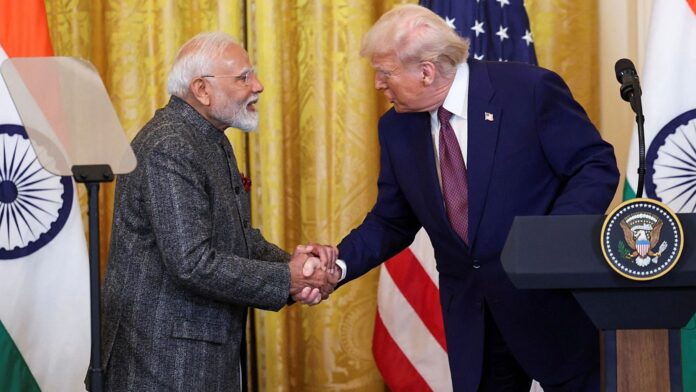India and the United States have finalised a limited trade agreement following prolonged and complex negotiations aimed at averting the imposition of new tariffs and addressing long-standing trade imbalances. The interim deal, reached ahead of a key tariff deadline, is seen as a strategic step toward a broader bilateral trade partnership expected later in the year.
The limited pact covers selective sectors, including industrial goods, certain categories of consumer exports, and specific customs-related barriers. While it falls short of a comprehensive free trade agreement, the deal offers crucial relief to exporters and postpones some of the more contentious issues, particularly in the agriculture sector.
India’s negotiation team strongly resisted pressure on opening its domestic market to sensitive imports such as genetically modified agricultural products, dairy, and large-scale grain imports. These areas are politically sensitive and directly impact millions of small farmers. India also sought exemption or relaxation of tariffs on exports like steel, aluminium, textiles, leather goods, gems, and agricultural commodities such as shrimp and bananas.
On the other hand, the United States pushed for greater market access for American industrial and agricultural goods, including auto components, soy, tree nuts, and dairy products. It also sought progress on issues like digital trade, intellectual property rights, and regulatory transparency.
The negotiations intensified as the United States prepared to impose new reciprocal tariffs on a range of imports from countries with high trade surpluses. India, facing potential tariff hikes on goods worth billions of dollars, extended its negotiating presence in Washington, helping to delay the enforcement of new duties.
A key outcome of the deal includes limited tariff relief for Indian labour-intensive sectors, modest concessions for US manufacturers, and a commitment to return to the negotiating table later this year. Both sides have framed this agreement as a step toward doubling bilateral trade volumes by the end of the decade.
The deal is expected to benefit Indian exporters by retaining their competitiveness in the US market and creating room for broader economic engagement. Simultaneously, the United States gains incremental access to one of the world’s fastest-growing consumer markets, aligning with its broader Indo-Pacific economic strategy.



